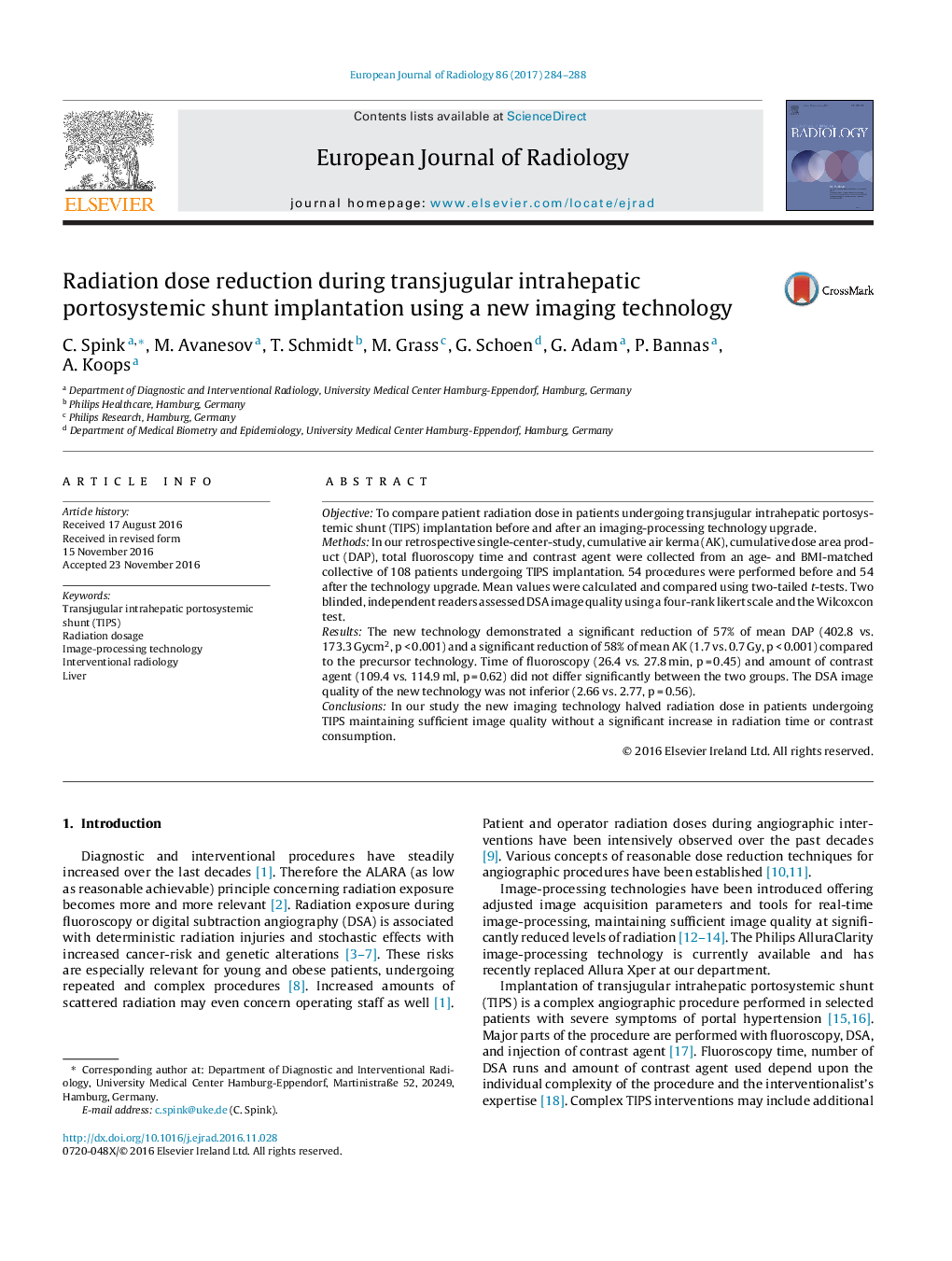| Article ID | Journal | Published Year | Pages | File Type |
|---|---|---|---|---|
| 5726141 | European Journal of Radiology | 2017 | 5 Pages |
â¢The new imaging technology halved the radiation exposure.â¢DSA image quality observed was not decreased after technology upgrade.â¢Radiation time and contrast consumption not significantly increased using the new technology.
ObjectiveTo compare patient radiation dose in patients undergoing transjugular intrahepatic portosystemic shunt (TIPS) implantation before and after an imaging-processing technology upgrade.MethodsIn our retrospective single-center-study, cumulative air kerma (AK), cumulative dose area product (DAP), total fluoroscopy time and contrast agent were collected from an age- and BMI-matched collective of 108 patients undergoing TIPS implantation. 54 procedures were performed before and 54 after the technology upgrade. Mean values were calculated and compared using two-tailed t-tests. Two blinded, independent readers assessed DSA image quality using a four-rank likert scale and the Wilcoxcon test.ResultsThe new technology demonstrated a significant reduction of 57% of mean DAP (402.8 vs. 173.3 Gycm2, p < 0.001) and a significant reduction of 58% of mean AK (1.7 vs. 0.7 Gy, p < 0.001) compared to the precursor technology. Time of fluoroscopy (26.4 vs. 27.8 min, p = 0.45) and amount of contrast agent (109.4 vs. 114.9 ml, p = 0.62) did not differ significantly between the two groups. The DSA image quality of the new technology was not inferior (2.66 vs. 2.77, p = 0.56).ConclusionsIn our study the new imaging technology halved radiation dose in patients undergoing TIPS maintaining sufficient image quality without a significant increase in radiation time or contrast consumption.
